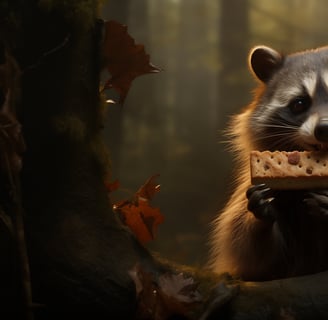Debunking the Myth of Bigfoot Gifting: Why It's Nonsense
Gifting is for the birds


Debunking the Myth of Bigfoot Gifting: Why It's Nonsense
Exploring the phenomenon of Bigfoot gifting presents a fascinating journey into the realm of cryptid research. Enthusiasts have long pondered the possibility of establishing a connection with these elusive creatures through the act of leaving offerings in their habitats. However, a closer examination of this practice reveals a complex interplay of beliefs, behaviors, and interpretations.
The concept of Bigfoot gifting, while intriguing, lacks concrete scientific evidence to support its validity. Despite numerous anecdotes and alleged encounters, there exists a notable absence of empirical data to substantiate claims of gift exchange between humans and Bigfoot. This absence underscores the importance of approaching the topic with a critical and discerning eye.
Proponents of Bigfoot gifting often attribute certain behaviors to these cryptids, drawing parallels to human customs and interactions. However, it's essential to consider alternative explanations for observed phenomena, such as the natural behaviors of wildlife or environmental factors at play. By adopting a multidisciplinary approach, researchers can better contextualize and understand the complexities of Bigfoot gifting.
Moreover, ethical considerations loom large in discussions surrounding this practice. The act of leaving items in natural habitats can have unintended consequences, including ecosystem disruption and wildlife disturbance. As such, it's crucial for enthusiasts to tread carefully and responsibly when engaging in Bigfoot gifting activities.
In conclusion, the concept of gifting to Bigfoot remains an intriguing aspect of cryptid lore, but one that requires careful scrutiny and skepticism. By approaching the topic with an open mind and a critical lens, researchers can contribute to a more nuanced understanding of Bigfoot behavior and the broader field of cryptid research."